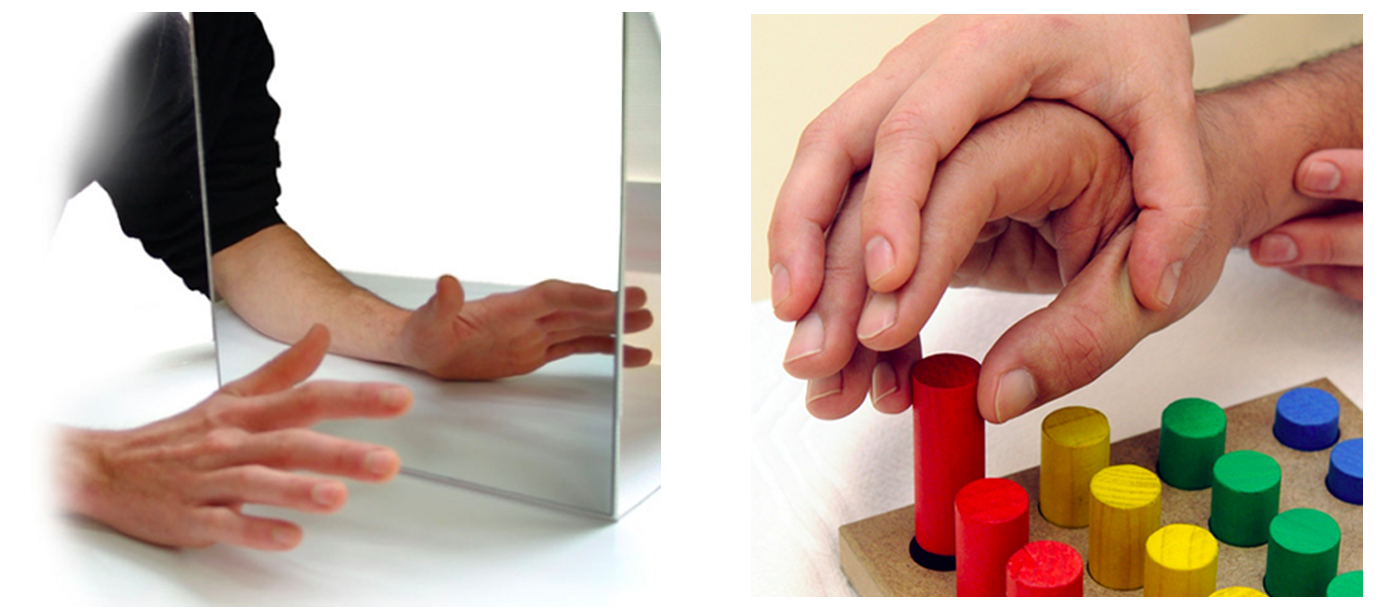Mirror ergotherapy
The basis of the mirror therapy method is the concept of visual feedback
Mirror occupational therapy is a fairly new method of rehabilitation proposed in 1995 by Professor Vilayanur S. Ramachandran of the University of California. The basis of the mirror therapy method is the concept of visual feedback. Since 2001, the positive effect of the therapy on the psychological component (empathy, imitation, learning) has become widely recognized. Memory and the autonomic nervous system have become key physiological elements of mirror therapy.
It is one of the methods of motor physical therapy. It is believed that the inventor of this method is Vilayanur Subramanian Ramachandran, an Indian-American neurologist, psychologist, MD, director of the Higher Nervous Activity Research Center (Brain and Cognition Center), Professor of Psychology and Neurophysiology at the University of California, San Diego, who in 1992 defended his PhD (the beginning of the study of mirror neurons) in the treatment of phantom pain. The basis of the mirror therapy method is the concept of visual feedback. Since 2001, the positive effect of the therapy on the psychological component (empathy, imitation, learning) has become widely recognized. Memory and the autonomic nervous system have become the key physiological elements of mirror therapy. Thus, the second important condition necessary to achieve a positive therapeutic effect of mirror therapy was formed: “awareness of what is happening”.
Subjective complaints:
- Pain
- Paresthesia
- Impaired motor skills
Clinical examination:
- Examination for anatomical and physiological limitations (scars, tattoos)
- Blood pressure and pulse wave on both limbs
- Test with a cuff
- Dynamometry
- Goniometry
- Capillaroscopy
- Neuro-cognitive assessment
The duration of the Mirror Therapy course is 8 procedures. 1 and 2 procedures, as well as 7 and 8 procedures daily; 3,4,5,6 – every other day. The procedure lasts 40-60 minutes.






There are no reviews yet. Be the first one to write one.